Modelling River Plume Sedimentation Incorporating Earths Rotation
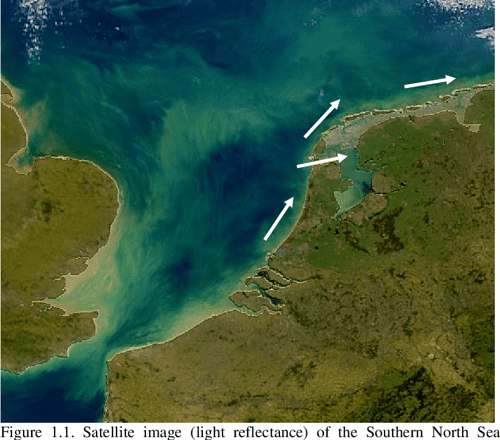
Credits to W.Jacobs, Modelling the Rhine River Plume
|
Experiments and Research performed by Aaron Phu, Mechanical Engineering, U. Alberta,
May - August 2021
Background
The motivation for this research is based on the observed satellite images of fresh water rivers flowing into the ocean, such as the Mississippi River in the Gulf of Mexico and the Rhine River in the North Sea. The outflowing river plumes are influenced by Earth's rotation over time, thus forming eddy-like structures as the plume enters the sea.
We are focusing our research on modelling the sediment patterns from the plume after it has settled on to the sea bed. Our research uses light attenuation to measure the spread and depth of the sediment on the sloping floor of the tank after particles in the plume have rained down from the fresh water plume.
Experimental Set-up
The experiment takes place inside of a large cylindrical tank with an inner diameter of 90.7 cm and a height of 30.0 cm, the tank is then filled with a saline solution up to a height of 10 cm. The tank is suspended over a square LED light panel to be illuminated from underneath, both the tank and light panel are secured on a rotating table. A plastic sheet is placed on one side of the tank to simulate a coastline, the plastic sheet has a hole to house the nozzle mouth. An angled plastic sheet is also placed in the tank, flat against the coastline to model the ocean shore. The entire assembly is then rotated until the water within the tank reaches solid-body rotation. As the tank is rotating fresh water is injected into the tank from the mixing resevoir where water is being mixed with glass micrometer spheres.
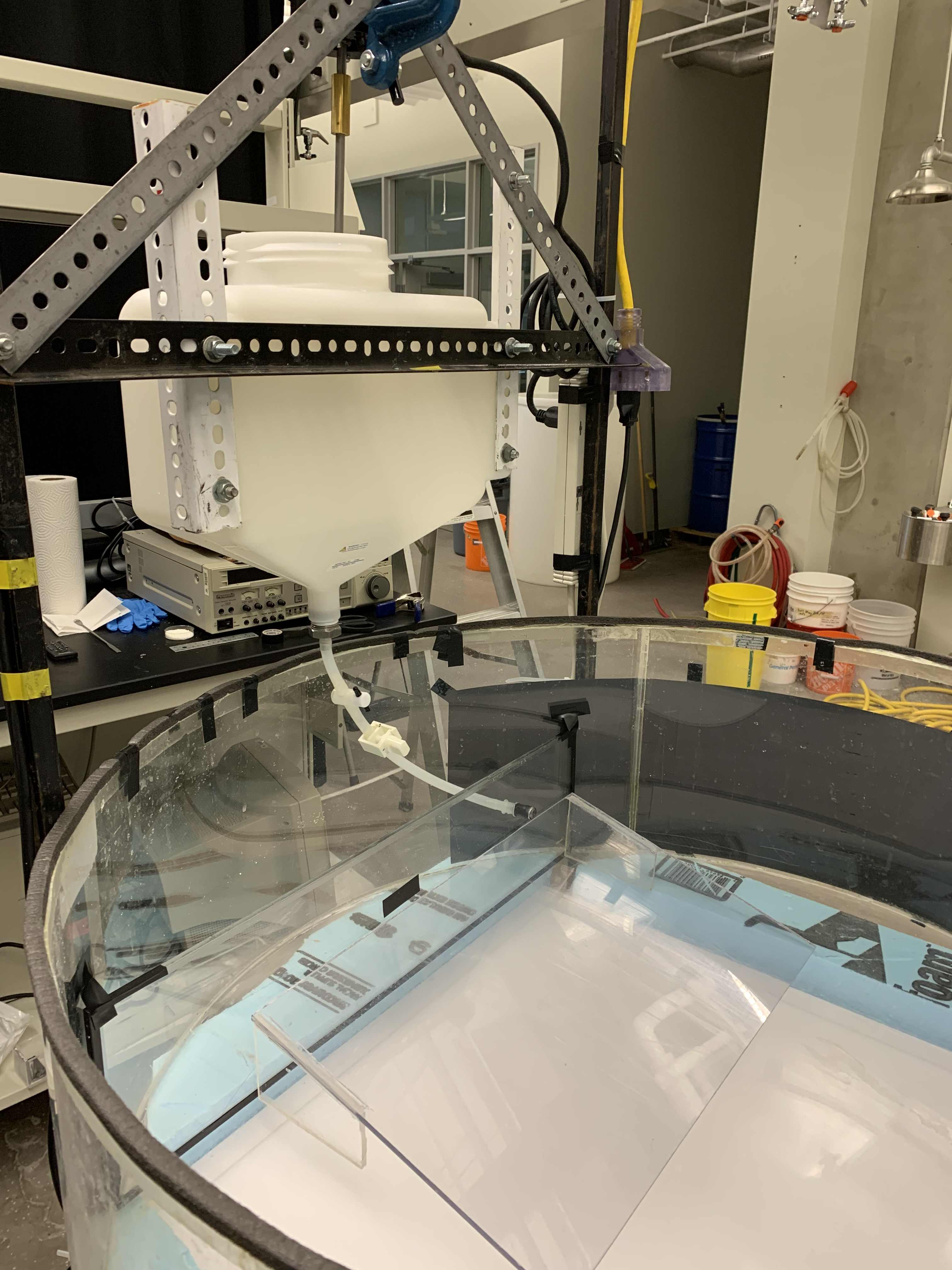 Figure 1.1: Experimental set-up
Figure 1.1: Experimental set-up
|
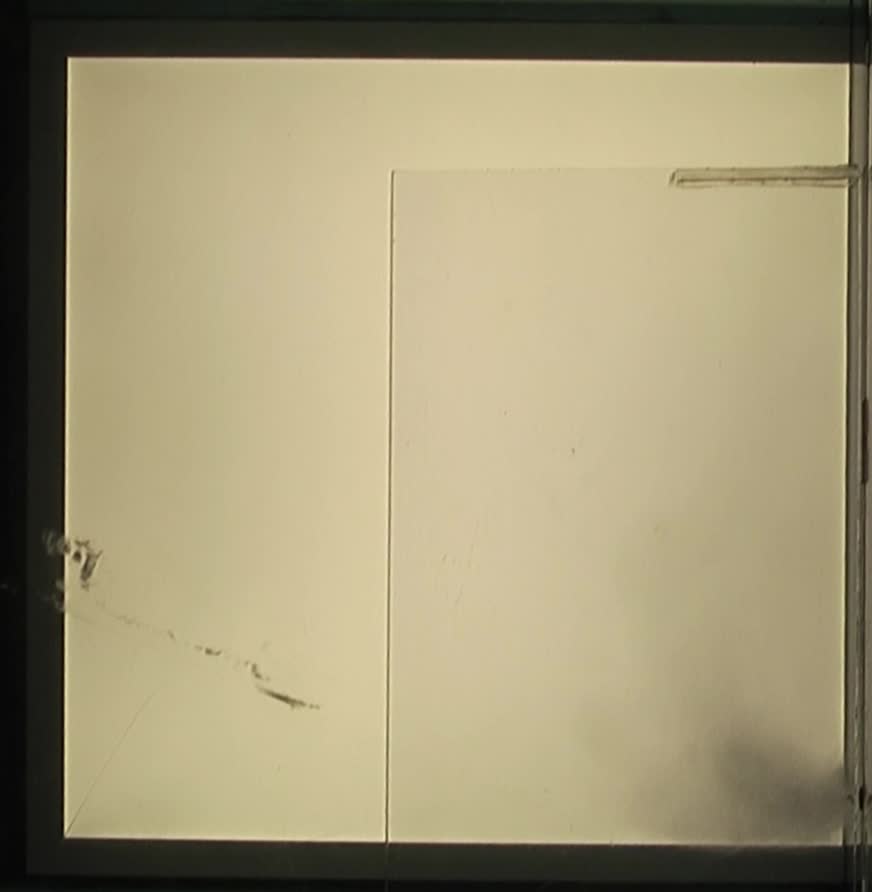
Figure 1.2: Top view of experiment
(click image for movie)
Parameters:
Rotation rate = 0.5 s^-1
Particle density (glass): 2.5 g/cm^3
Particle mean diameter: 45.5 um
Concentration of injected mixture: 1.0030 g/cm^3
Ambient salinity: 1.0200 g/cm^3
Flow rate at nozzle: 4.2 cm^3/s
|
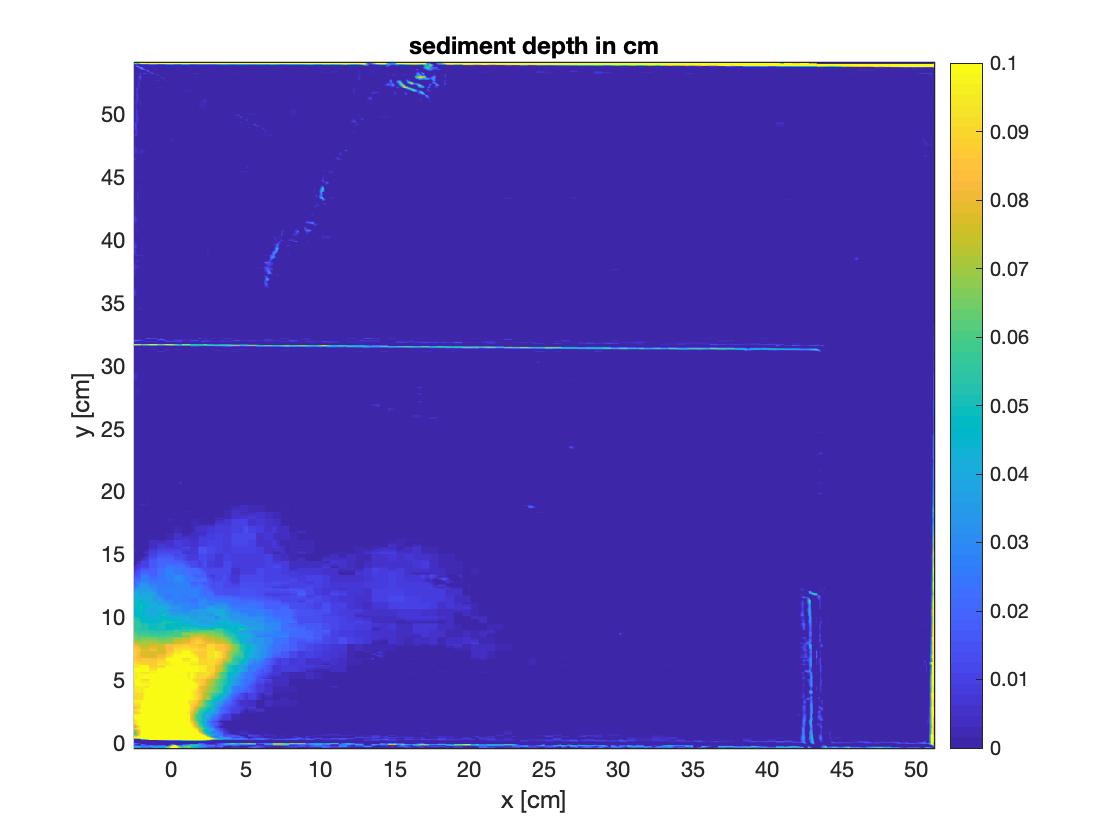
Figure 2.1: Colormap of sediment
(click on image to play movie)
|
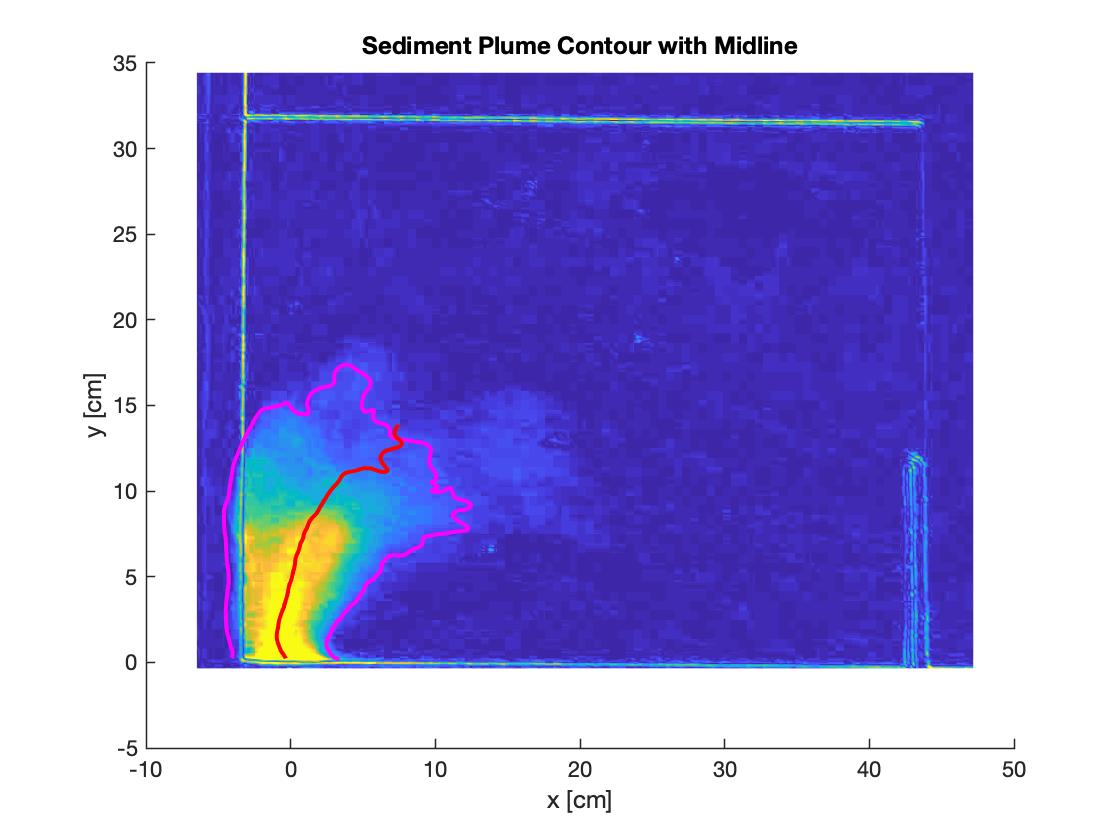
Figure 2.2: Contour of plume and midline estimate
|
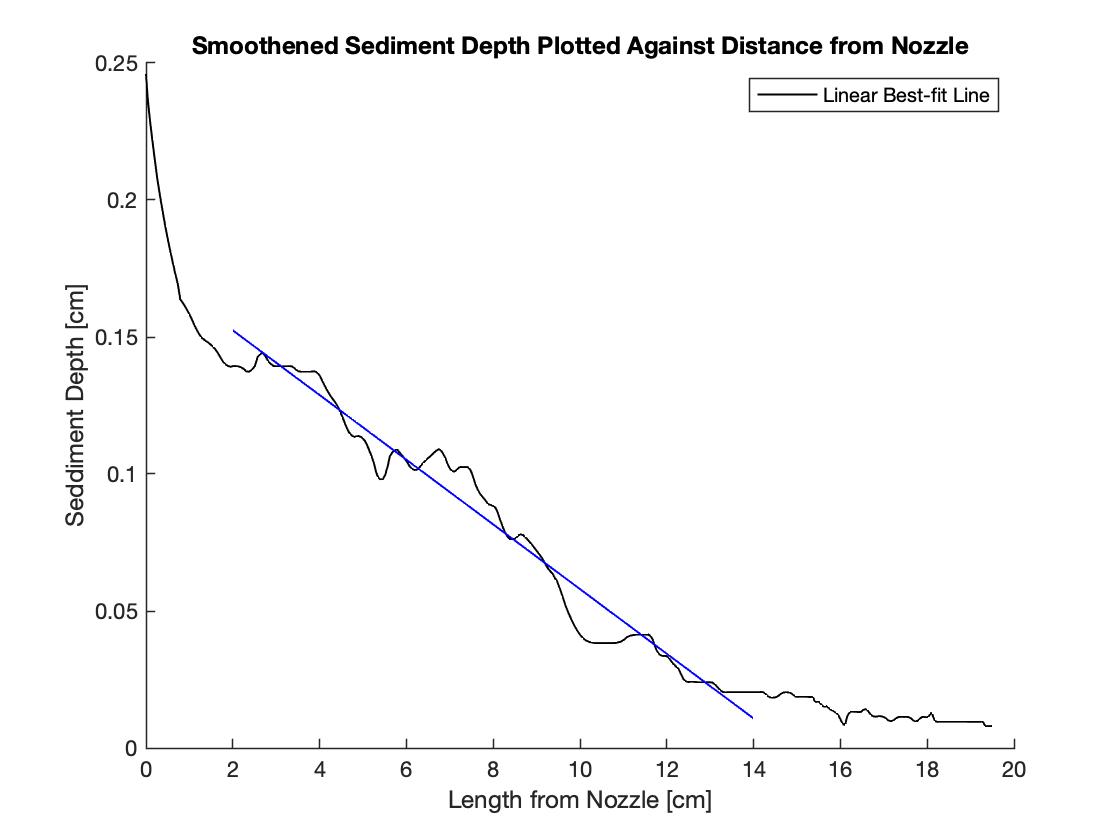
Figure 2.3: Sediment height along midline
|
Future work
Future work will develop theory for the spread of sediments from particle-laden outflows and will compare its predictions with the results of these experiments. The results will then be scaled to predict sedimentation for river outflows into the ocean.
Acknowledgements
This research was financially supported by NSERC's Undergraduate Student
Research Assistantship (USRA) and Discovery Grant programs.
Return to
Research Interests page
Bruce's home page




